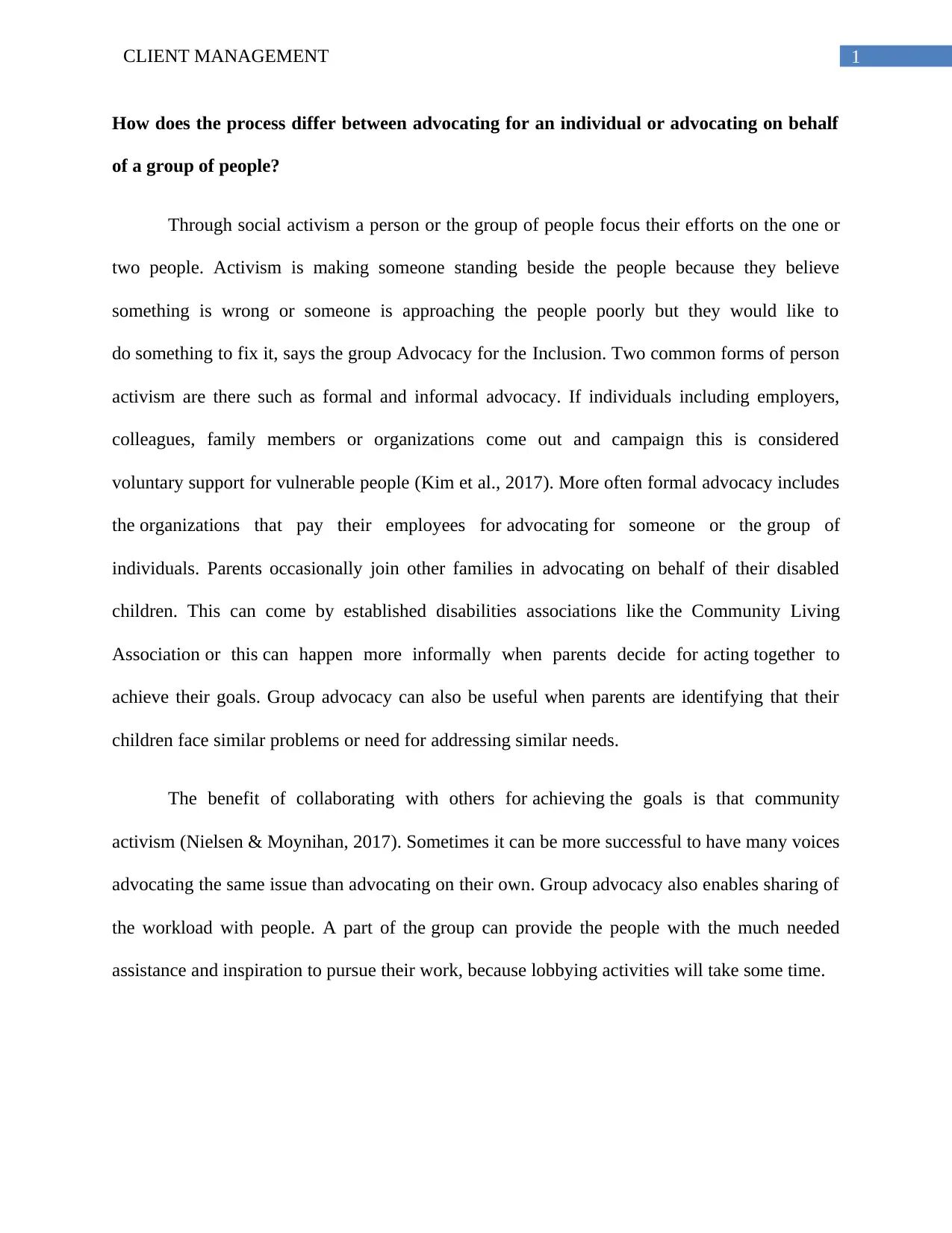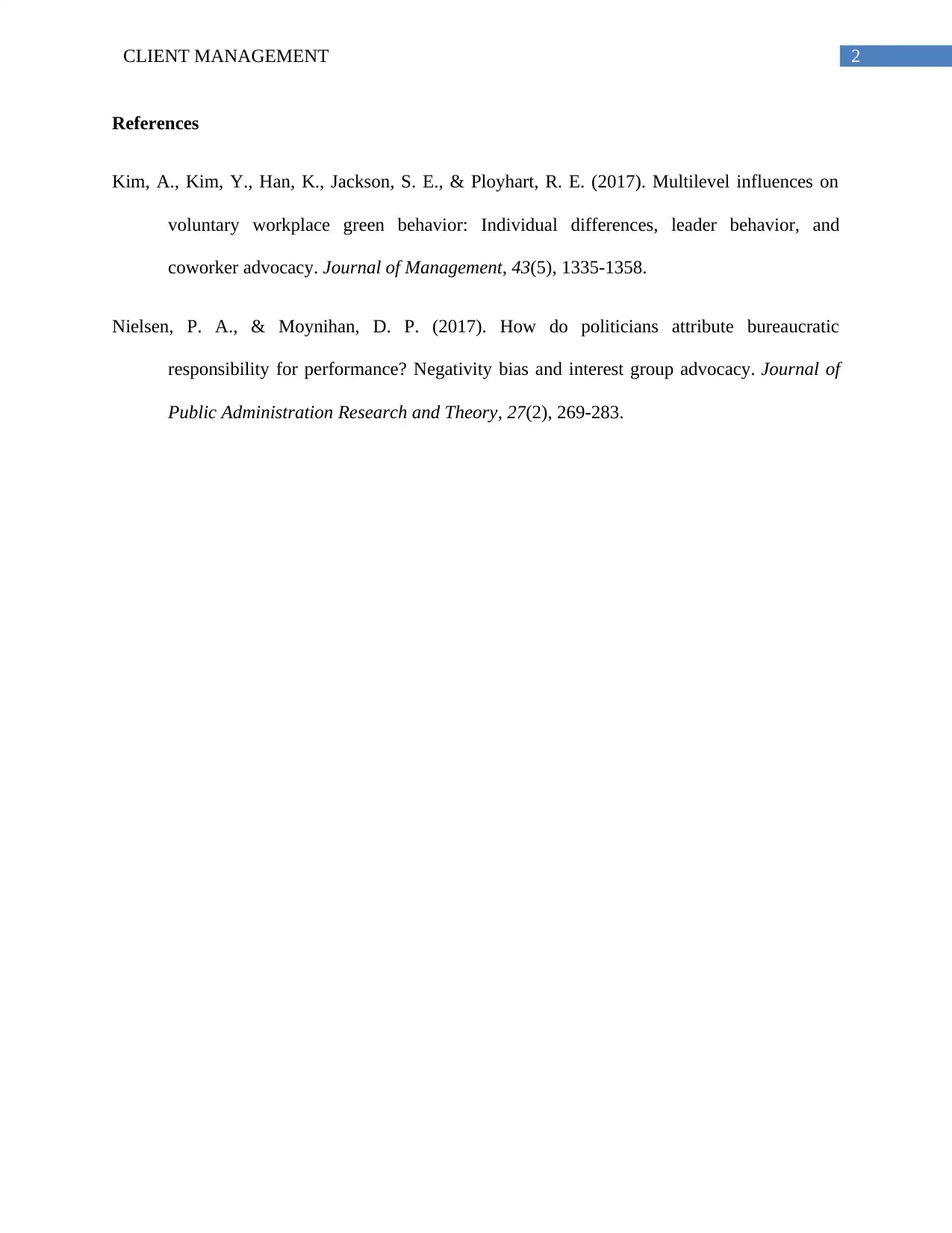Client Management Report: Individual and Group Advocacy
VerifiedAdded on 2022/08/12
|3
|421
|17
Report
AI Summary
This report delves into the nuances of client management, specifically focusing on the contrasting approaches of individual and group advocacy. It begins by defining advocacy and its role in supporting individuals and groups, highlighting the distinctions between formal and informal methods. The report emphasizes that individual advocacy often involves direct support from family, colleagues, or organizations, while group advocacy allows for shared workloads and the collective impact of multiple voices. Furthermore, the report underlines the significance of collaborative efforts, particularly when addressing similar challenges faced by clients. It cites relevant research to support the analysis, providing a comprehensive overview of the benefits and implications of both advocacy models. The report concludes by emphasizing the importance of understanding these differences to effectively manage clients and achieve desired outcomes.
1 out of 3






![[object Object]](/_next/static/media/star-bottom.7253800d.svg)